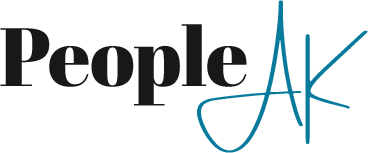A high-quality onboarding process allows incoming team members to feel comfortable in their new roles and provides them with the information they need to excel in the workplace. It also serves as an introduction to your workplace culture.
On the other hand, negative experiences during this process double the chances of new employees looking for work elsewhere.
While many organizations begin the onboarding process after an employee has accepted an offer, taking the first steps during interviews can help you save valuable time. It also gives candidates a chance to start learning about your company to help them determine whether or not they would be a good fit.
Why Onboarding Has Never Been More Important
Onboarding has always been a crucial step in the employee hiring and training process. However, getting this step right has become more critical than ever.
Low-quality onboarding programs can significantly increase a new worker’s likelihood of leaving your organization early. That’s nothing new on its own, but it is a much bigger problem in the wake of The Great Resignation. To keep your new employees satisfied, engagement in the form of proactive onboarding is key.
Along with that, onboarding can:
- Help your employees know what they need to do. Believe it or not, in some companies with terrible onboarding procedures, new workers may not know their job duties or who they should report to. A solid process will make this clear from day one.
- Give you an opportunity to check in on employees. Onboarding shouldn’t just involve telling employees what to do once. Instead, supervisors should get in touch with new workers once a week at minimum as part of this process.
- Let newcomers learn about your office culture. People in your organization can’t live up to your core values and vision if they don’t know what they are. Onboarding is the perfect time to express these values.
What Recruiting Should Look Like
There’s a good reason why interviews are a significant milestone in the recruitment process. It serves as the first time you’ll get to meet them face-to-face (or, as has become common in recent years, over video chat).
At heart, the onboarding process is a way of introducing new employees to your business but should start during the interview stage. By reflecting on your company culture during the interview, you can also get a better understanding of whether or not the person you’re talking to would be a good fit.
How Onboarding Should Happen In An Interview
Employee onboarding during recruitment should be a dialogue, not a monologue. You should talk about paperwork, the people they’ll work with, what they can expect during the first six months of employment, how you celebrate wind, measure success, and future goals for both the candidate and the company.
Consider crafting your interview questions from an onboarding-based perspective. Simply ensure the questions are written with your company culture (and expectations for new employees) in mind. In doing so, you’ll be able to express what your business is all about.
Why It’s Important
When you ask interview questions that express your priorities as a company, the responses offered by candidates can give you a window into their own priorities. If an interviewee’s goals align with your own, there’s a good chance they’re worth moving forward in the hiring process.
Cut Out the Guesswork
Communicating your corporate culture during your first meeting with a candidate may sound relatively minor. Still, it will set the tone for the rest of the recruiting process–and hopefully, many years of successful employment.
Your organization can’t afford to make its onboarding process anything less than a top priority as your efforts will help you actively find and retain high-quality candidates.
Transforming your onboarding process isn’t something you need to do on your own. Instead, lean on the experts at People AK.
The team at People AK doesn’t just specialize in recruitment–they also have over 40 years of business consulting experience. Not only can they help you find the perfect candidate for your organization, but they can guide you to retaining them long term.

